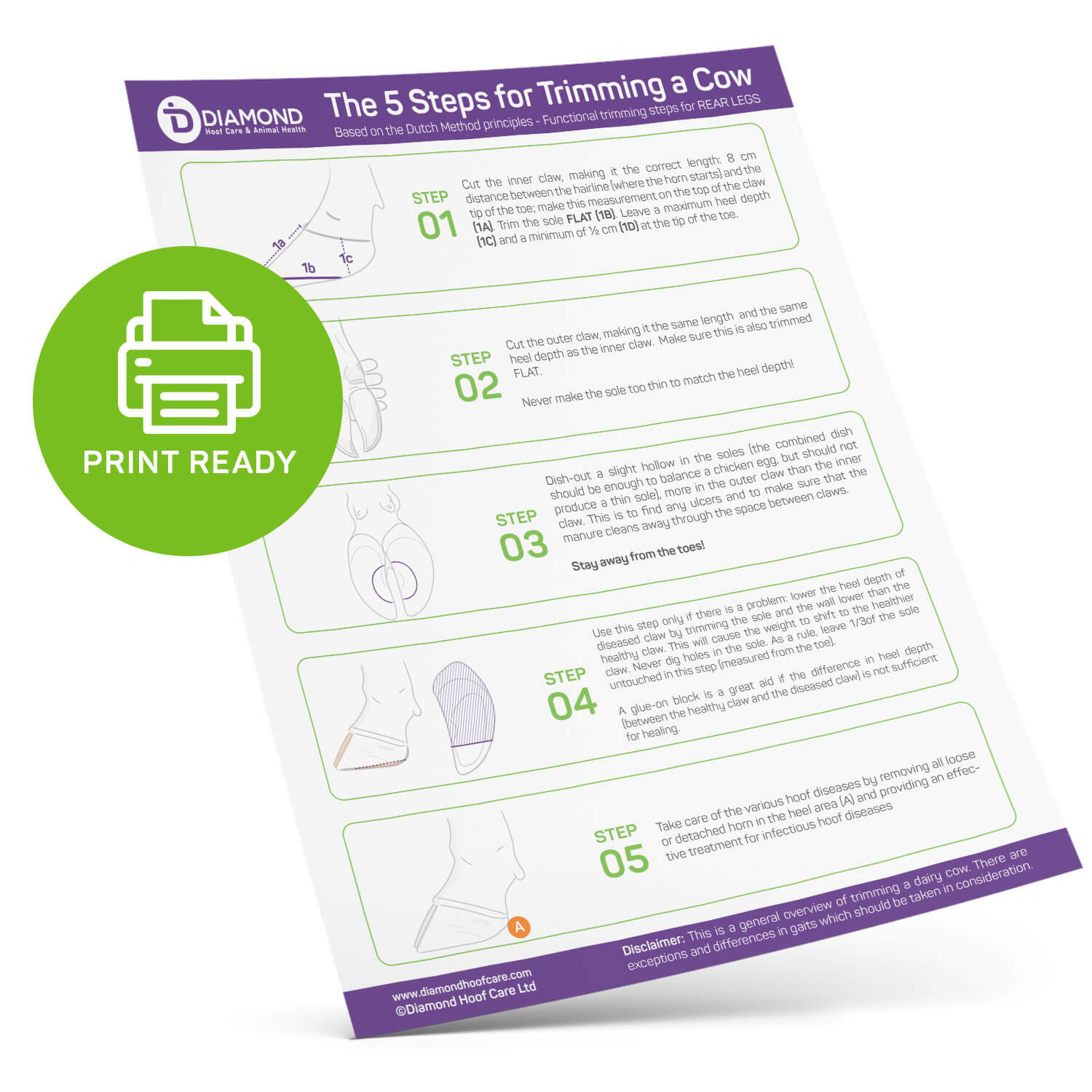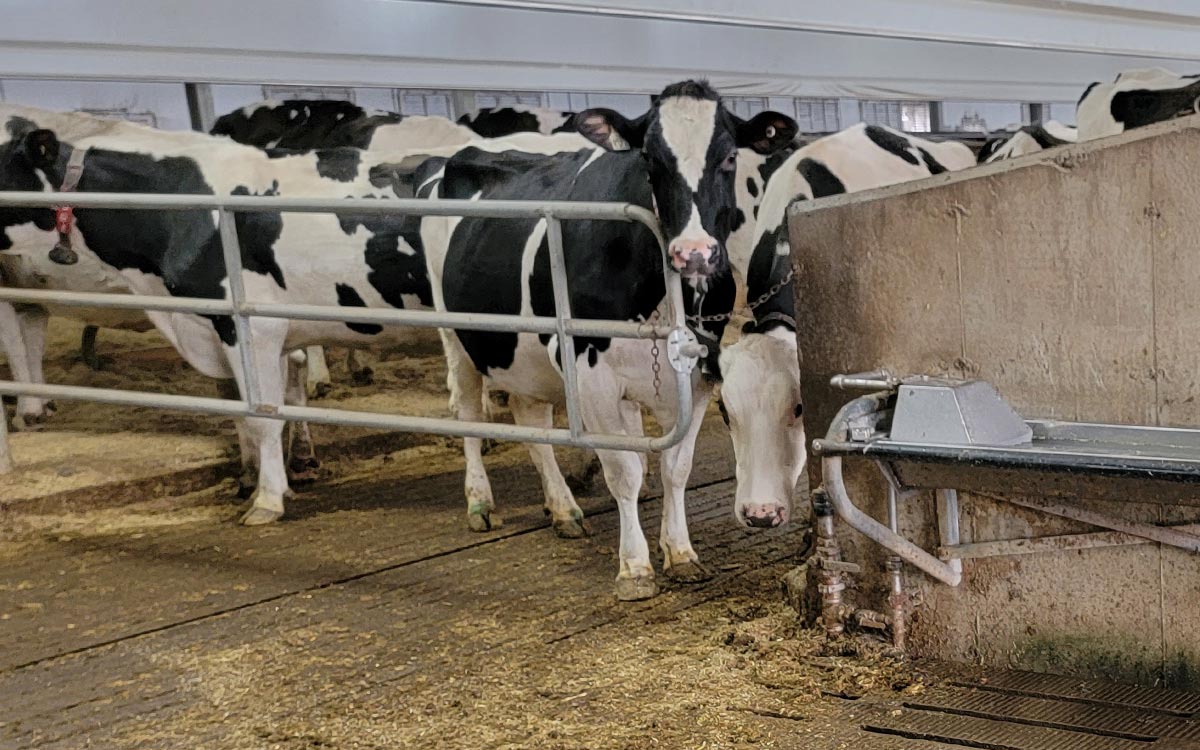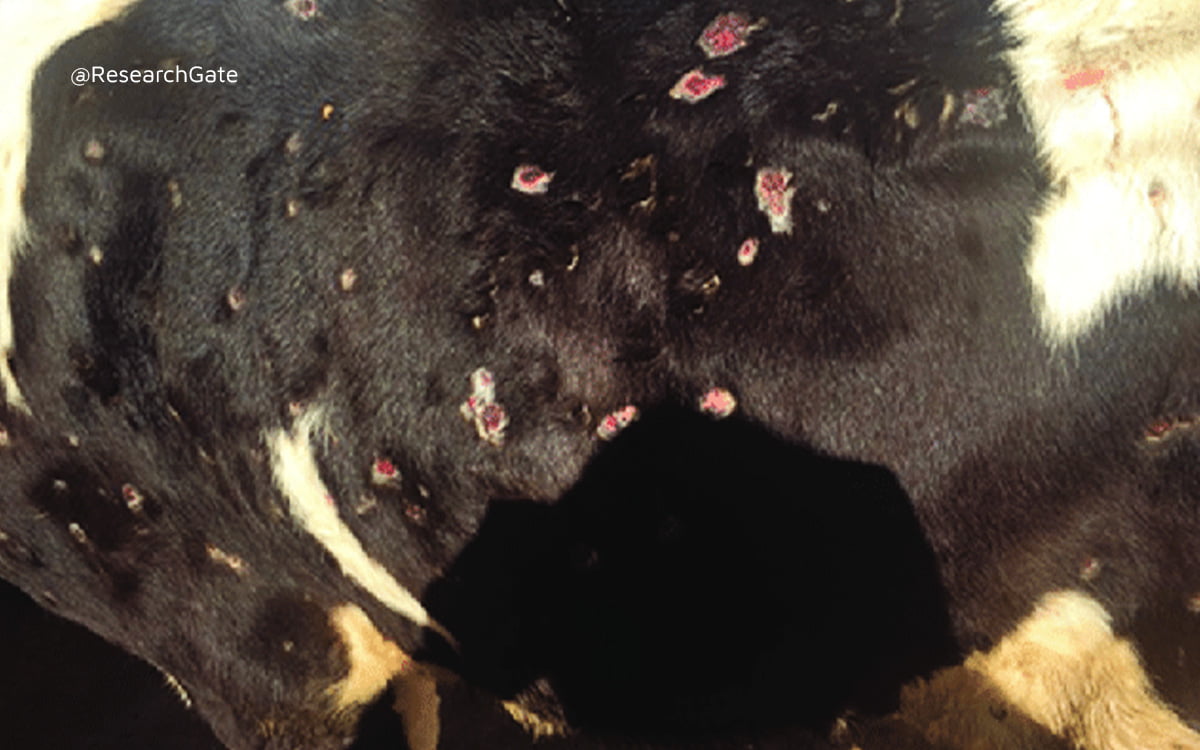Overgrown cow hooves can lead to lameness, extreme discomfort, infections, and other serious issues. Identifying the cause of your cows’ long hoof problem can help you find the solution as quickly as possible. Many of these causes are reversible, but you need to address them swiftly to prevent long-term damage and agitation.
The reasons why a cow grows long hooves include excessive energy intake, malnutrition, rumen acidosis, curly toe syndrome, and walking on soft ground. Obesity and genetic predispositions can lead to laminitis, which causes uneven wearing that, in turn, affects the corium and lengthens the hooves.
In this post, we’ll break down why your cows’ hooves are growing longer than they should and what you can do about it.
Excessive Energy Intake
Excessive energy intake occurs when cows (and other animals) overeat. It can also happen if they have an improperly balanced diet that’s too energy-dense. As Farm and Dairy explain, overeating and excessive ration consumption can lead to a cow’s hooves overgrowing, but obesity is generally a precursor.
According to Oklahoma State University, cows eat up to 2% of their body weight daily. If yours eats more than this, it might be time to reduce rations. Some animals naturally overeat for survival purposes. We advise contacting a professional nutritionist at your local feed mill to discuss such challenges.
Once their hooves get too long, the cows distribute their weight differently, causing unwanted pressure points in the pedal bone (inside the hoof). This can potentially result in sole ulcers and whiteline defects. The hoof develops grooves and cracks on the outside (the wall area). The deeper the cracks, the higher the chance of an infection and lameness.
Malnutrition
If a cow doesn’t get enough food or its diet is poor, it’ll be malnourished. Malnutrition can cause irregular growth on the outer claw or the inner claw. When a cow’s hooves don’t grow at the same rate, they get uneven and out of balance. The difference in hoof length can force the animal to put more pressure on one side than on the other.
Malnutrition can be fixed by improving a cow’s diet. Steer clear of unhealthy scraps or mouldy rations and unclean water that can trigger malnourishment symptoms. Contact a local veterinarian or nutritionist if you’re unsure of what’s causing this health issue.
Rumen Acidosis
Rumen acidosis is the result of eating too many foods with fermenting properties. If a cow has rumen acidosis, it can experience hoof problems in addition to numerous other side effects. According to DSM, rumen acidosis is a bovine metabolic disease that affects feedlot as well as dairy cattle and overloads the rumen with acids – the common definition of laminitis. The overly acidic concentration directly impacts the entire well-being of the animal, affecting blood flow, digestion, and appetite, among others.
When rumen acidosis weakens a cow’s blood flow, the animal won’t have as much blood circulating in its hooves. This process causes weakened soft tissue, toxin build-up, and poor horn production. Additionally, the hooves wear unevenly and grow longer in some areas. The formation of ‘growth rings’ on the hoof wall and ‘duck feet-shaped’ hooves is often the result over a period of time. Rumen acidosis could be the culprit if you notice shifting or rotating hooves paired with indigestion and a lack of eating. You should regularly consult the farm’s veterinarian and nutritionist to prevent rumen acidosis. A professional hoof trimmer is often called in to fix the hooves after detecting lameness or overgrowth.
Curly Toe Syndrome
When the outer wall of a cow’s hoof grows faster than the sole area (the bottom or walking surface), the animal could develop a corkscrew claw. This condition (also known as curly toe syndrome) causes the hooves to grow in various directions. The lack of support can lead to extreme pain and discomfort. The affected hoof and joint are often twisted due to this occurrence. Furthermore, it’ll eventually make some claws grow longer than others.
According to Agriculture, a cow’s lameness from curly toe syndrome can lead to rapid overgrowth. The article lists three possible factors behind this condition:
- Genetics
- Hot rations
- Walking on uneven or unnatural terrain

Curly toe syndrome can be challenging to correct unless the problem is detected in its early stage. Neglected curled toes cause a cow unnecessary pain and life-long damage. The most common occurrence is the outer hoof on the hind leg curling while the inner claw remains flat and normally shaped. On the front feet, this order is often reversed: the inner hoof curls, and the outer hoof is normal.
Obesity
If a cow is overweight, this will put excessive pressure on the hooves; therefore, a balanced hoof is of the utmost importance. Cows often change their gait and start wearing the hooves wrong. Additionally, the hooves bearing more weight can rotate and wear more in the heel area, causing them to grow longer than they should. If you notice that a cow looks obese and has hoof problems, you should first correct its diet in consultation with your farm’s nutritionist. Additionally, contact your hoof trimmer to balance the claws and correct the long hooves. It is also essential to ensure the cows have ample walking area and are not overcrowded.
Excessive eating can also cause the aforementioned rumen acidosis. Combining rumen acidosis and obesity drastically worsens a cow’s hoof length and health problems. It can also lead to long-term pain and horn damage.
Genetic Predisposition
Some cows are predisposed to having long hooves due to genetic problems. If a cow’s ancestry shows a history of hoof problems, there’s a chance for this trait to be passed down to a calf. The good news is that most cows with a genetic predisposition for long hooves can wear them down by walking on proper flooring and having adequate pen space. A professional hoof trimmer can help the animal improve its gait and life expectancy, often with minor corrections over time. Our advice is to trim all young stock before calving. This investment will save time and lameness problems in the animal’s first lactation.
Unfortunately, genetic predispositions can also lead to obesity, rumen acidosis, curly toe syndrome, and other health problems mentioned here. If this is the case, follow the appropriate solution under the corresponding heading.

5 Steps to Trim Cheat Sheet
Walking on Soft Ground
As per The Veterinary Handbook, walking on the soft ground too often can cause a cow’s hooves to grow excessively long. Cows need to walk on harder surfaces that can wear their hooves. If the ground is too soft (straw pack bedding, soft pastures, or entire barns with rubber floors), they’ll develop longer hooves, often combined with curly toe syndrome and other unwanted health problems. Needless to say, this is a fine line: Cows love rubber floors and a dirt pack. From its comfort perspective, the cow tells us something through its behavior. We advise watching for excessive horn growth and ensuring timely trimming sessions to keep an optimum ratio between horn production and wearing.
Laminitis
As per The Veterinary Handbook, walking on the soft ground too often can cause a cow’s hooves to grow excessively long. Cows need to walk on harder surfaces that can wear their hooves. If the ground is too soft (straw pack bedding, soft pastures, or entire barns with rubber floors), they’ll develop longer hooves, often combined with curly toe syndrome and other unwanted health problems. Needless to say, this is a fine line: Cows love rubber floors and a dirt pack. From its comfort perspective, the cow tells us something through its behavior. We advise watching for excessive horn growth and ensuring timely trimming sessions to keep an optimum ratio between horn production and wearing.

Laminitis can lead to founder – a condition where the hoof cavitates and grows in various directions. It makes the hooves look even longer because they don’t grow evenly. Acute founder needs to be treated by a veterinarian as quickly as possible to avoid severe permanent damage to the inside of the hoof and also to ensure proper pain relief management. Unchecked and untreated acute problems can be fatal to cows.
(Note: Founder is the same thing as laminitis, but many hoof trimmers use the word ‘founder’ to describe severe forms of laminitis. In the equine world, the word founder is exclusively used.)
Final Thoughts
Although these conditions can cause extreme discomfort, many can be treated quickly. If you have any concerns, contact a local veterinarian or a professional hoof trimmer to learn what steps you need to take to restore your cows’ hooves. In some cases, it’s normal for cows to have longer hooves. They’ll naturally wear down when the animals walk enough on hard ground. Over-trimming by removing too much horn is the other side of the coin – and we definitely want to avoid that human-caused problem.
To learn more about hoof health and how to do proper hoof trimming, I have created an easily downloadable hoof disease chart which contains the common hoof disease in cattle. This reference sheet can assist you with the diagnosis of hoof problems.


